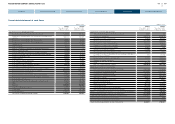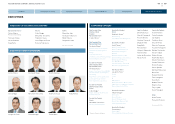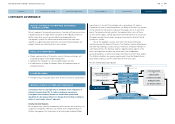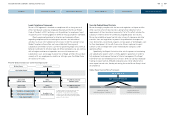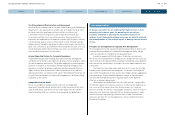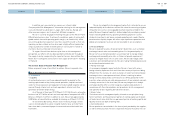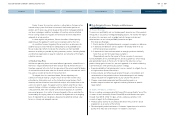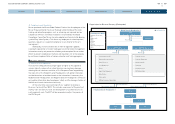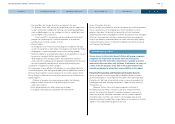Nissan 2013 Annual Report Download - page 39
Download and view the complete annual report
Please find page 39 of the 2013 Nissan annual report below. You can navigate through the pages in the report by either clicking on the pages listed below, or by using the keyword search tool below to find specific information within the annual report.
Dealer finance for inventory vehicles is authorized on the basis of an
internal rating system that takes into account the financial position of
dealers, and if necessary, personal guarantees and/or mortgage collateral
are taken in pledge in addition to pledges of inventory vehicle collateral.
These scoring models are regularly reviewed and revised to keep them
adequate in actual practice.
In some regions and products, Nissan also offers different pricing
depending on the applicant’s credit score to compensate for the risks.
As a matter of accounting policy, Nissan maintains an allowance for
doubtful accounts and credit losses adequately to cover probable losses.
Nissan makes best efforts to recover the actual losses from bad debt
accounts as quickly as possible by taking necessary actions, including flexible
and effective organization change for collection and utilization of third-party
collection services.
4. Residual Value Risks
Vehicles on operating leases and some balloon-type credits, where Nissan is
the lessor, are guaranteed end-of-term residual value by Nissan. Nissan is
therefore exposed to the risk that the sale value of the vehicle could fall below
its contractual residual value when the financed vehicle is returned and sold in
the used car market at the end of the contract term.
To mitigate the risks mentioned above, Nissan objectively sets
contractual residual value by using the future end-of-term market value
estimation by third parties such as the Automotive Lease Guide in North
America, and the estimation from statistical analysis of historical data on the
used car market in Japan. To support used car market value Nissan takes
several strategic initiatives, including control of sales incentives for new car
sales promotion, fleet sales volume control and introduction of a certified
pre-owned program. As a matter of accounting policy, Nissan evaluates the
recoverability of carrying values of its vehicles for impairment on an ongoing
basis. If impaired, Nissan recognizes allowance for potential residual value
losses in a timely and adequate manner.
2 Risks Related to Business Strategies and Maintenance
of Competitiveness
1) Product Strategy
To secure our profitability and sustainable growth based on our future product
lineup plan, in our product strategy developing process, we monitor the impact
of various risk scenarios, such as global market changes and demand
deteriorations, on our future profitability based on our plan.
Risk Scenario Examples:
1. Drastic decline of total global demand, using past examples as reference
2. A demand shift between vehicle segments drastically faster than our
mid-term planning assumptions
3. A demand shift from mature markets to emerging markets drastically
faster than our mid-term planning assumptions
We periodically monitor the impact of these scenarios to secure our
future profitability and sustainable growth, and also update our future lineup
plan periodically based on the results. To improve the robustness of our
product lineup against these risks, our main approach is to take the following
countermeasures when planning our product strategy.
n Expand availability of individual products across markets to mitigate the risk
of single market demand fluctuations
n Increase volume and efficiency per product through a consolidation and
rationalization of the portfolio to lower the breakeven point and thereby
reduce the profit risk of global total industry volume (TIV) declines
n Prepare a more balanced product portfolio meeting needs in a
broader range of markets and segments reducing reliance on specific
large markets
2) Quality of Products and Services
Nissan is making a companywide effort toward “Enhancing Quality,” one of the
six areas of focus defined by Nissan Power 88, our mid-term business plan
through fiscal 2016. Under this plan, actions are being carried out with
numerical targets for the following areas.
n Product quality: Quality of our products based on the customer’s actual
experiences as an owner of the vehicle
n Perceived quality and attractiveness: Customers’ impressions of a vehicle’s
quality when they look at and touch it in a dealer’s showroom
38
CORPORATE GOVERNANCE
NISSAN MOTOR COMPANY ANNUAL REPORT 2013
CONTENTS
MANAGEMENT MESSAGES
CORPORATE FACE TIME
PERFORMANCE
NISSAN POWER 88



